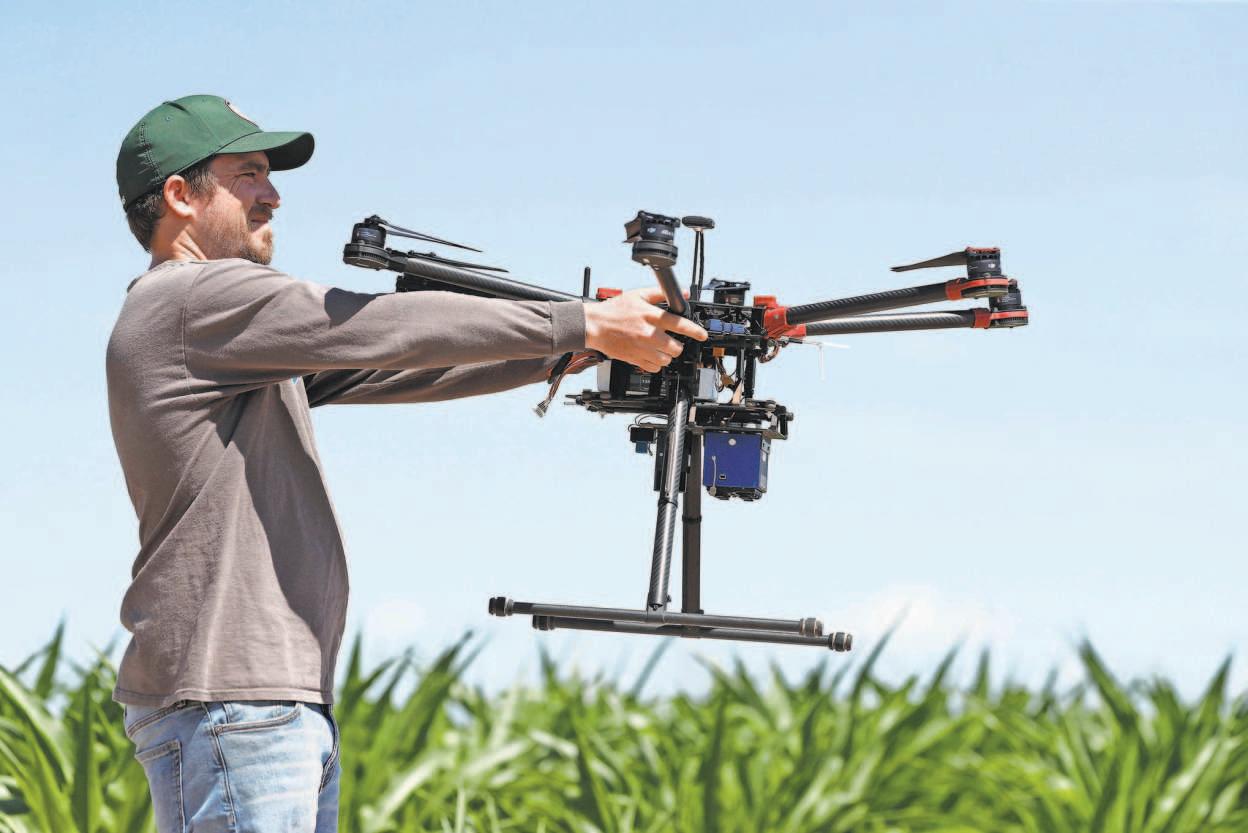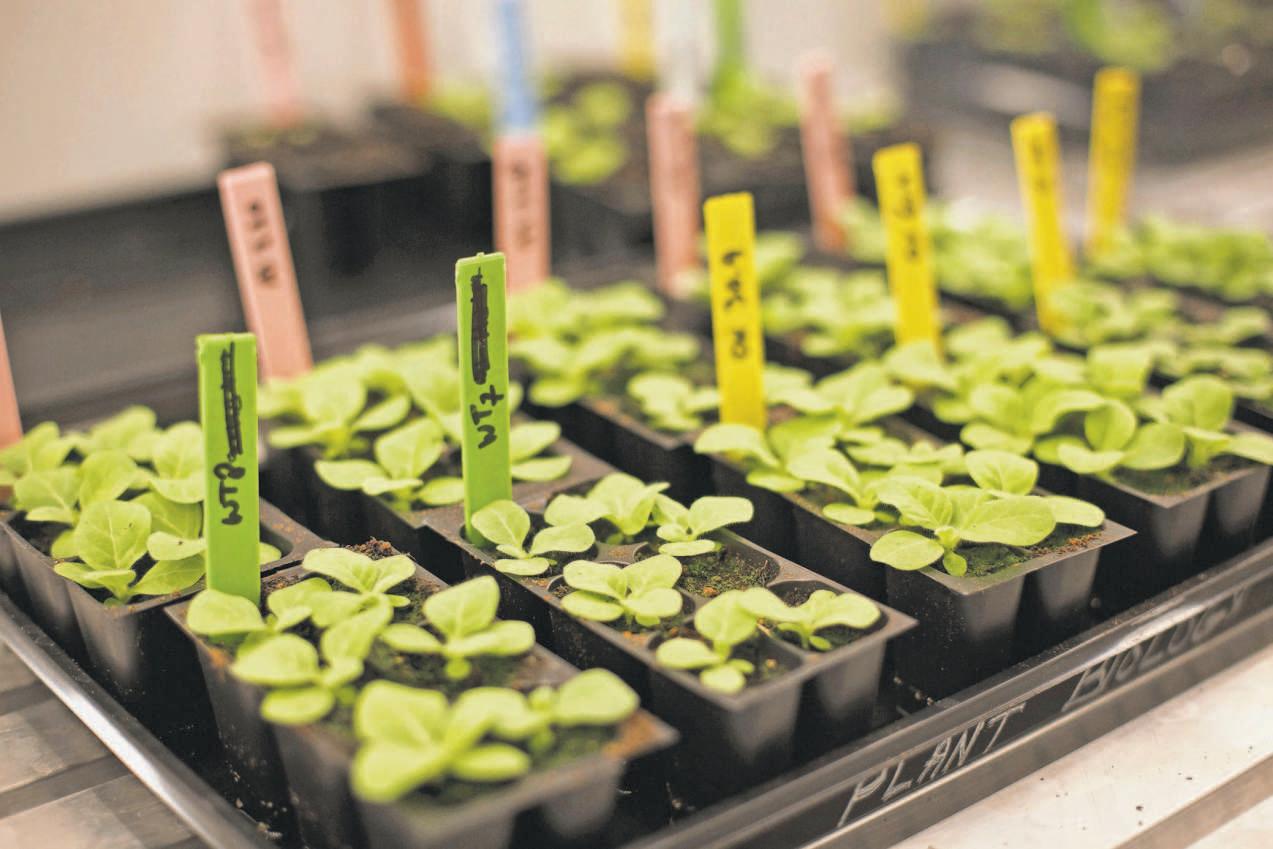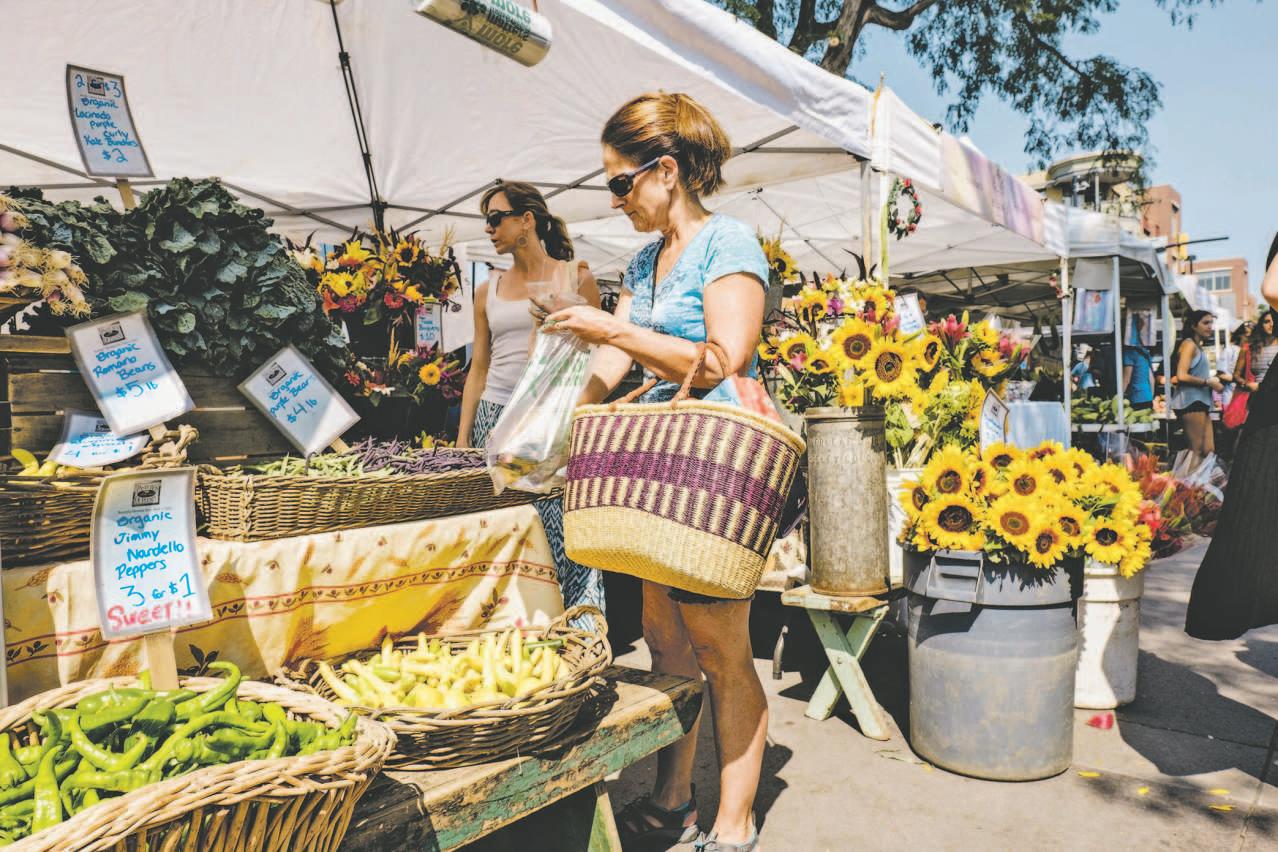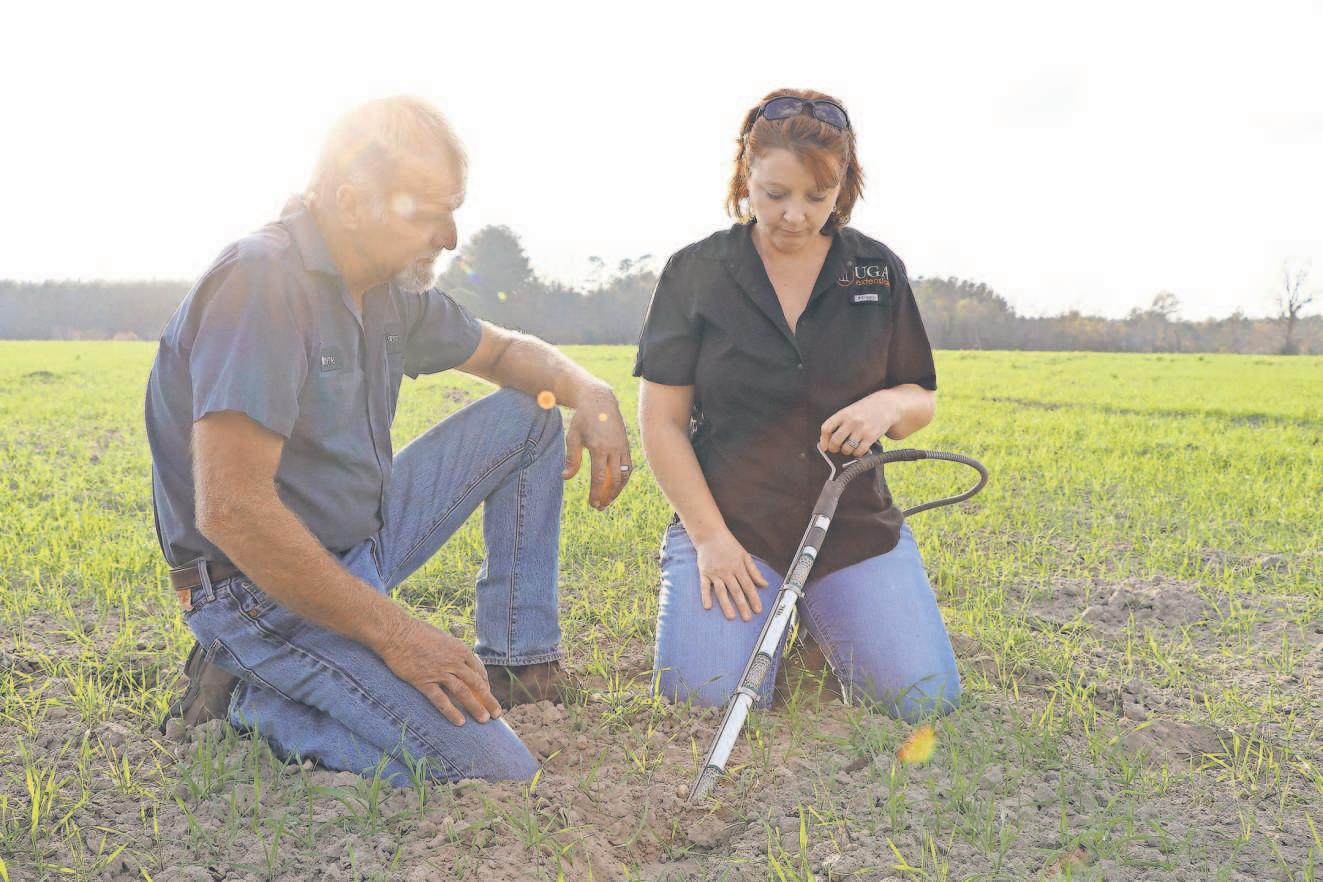
11 minute read
TZ KHA/USA TODAY NETWORK-WISCONSIN


Advertisement
BLOCKCHAIN MEETS FOOD CHAIN
THE TECHNOLOGY BEHIND CRYPTOCURRENCY PROMISES TO BRING TRUST, TRANSPARENCY TO FOOD
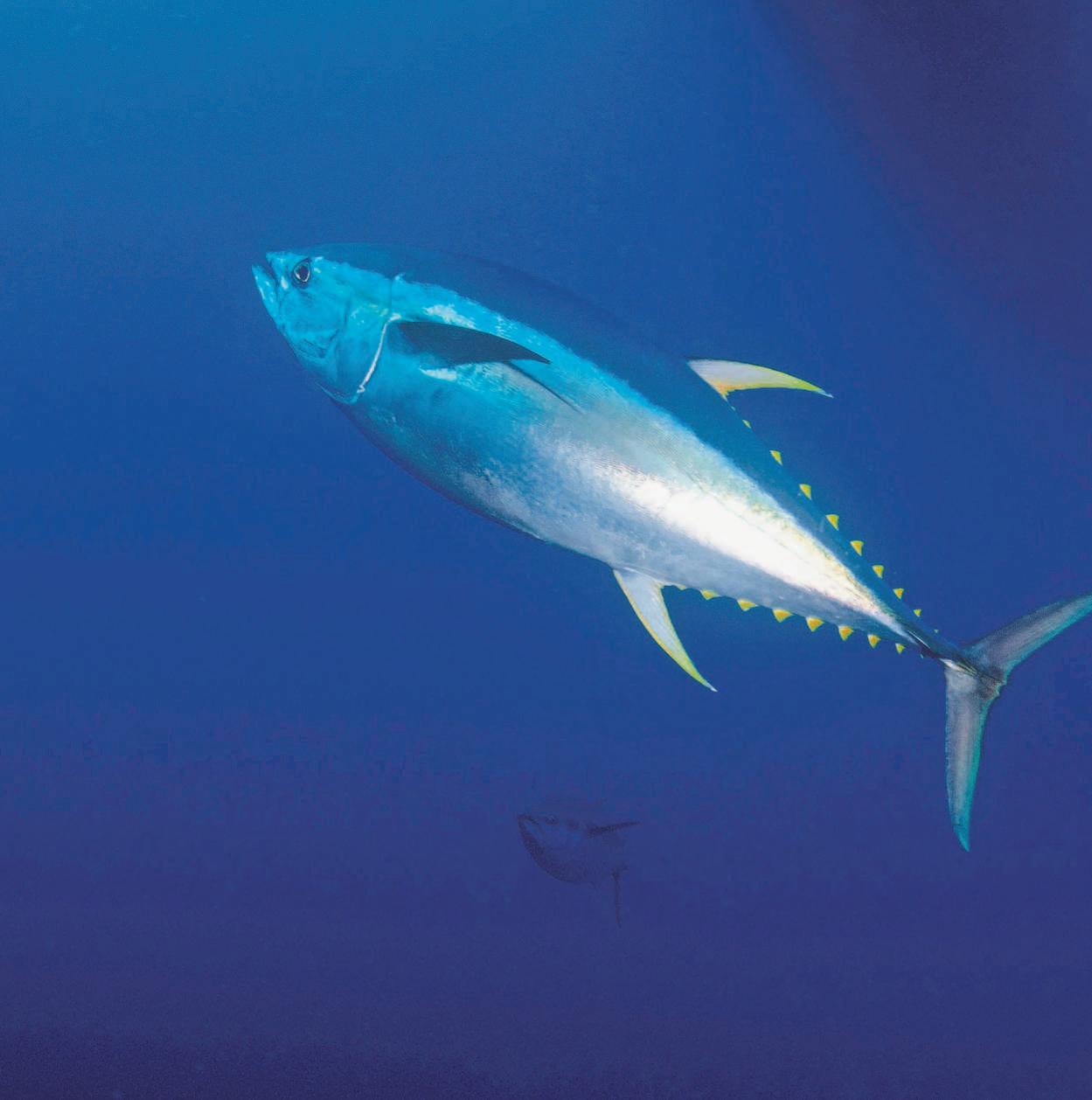
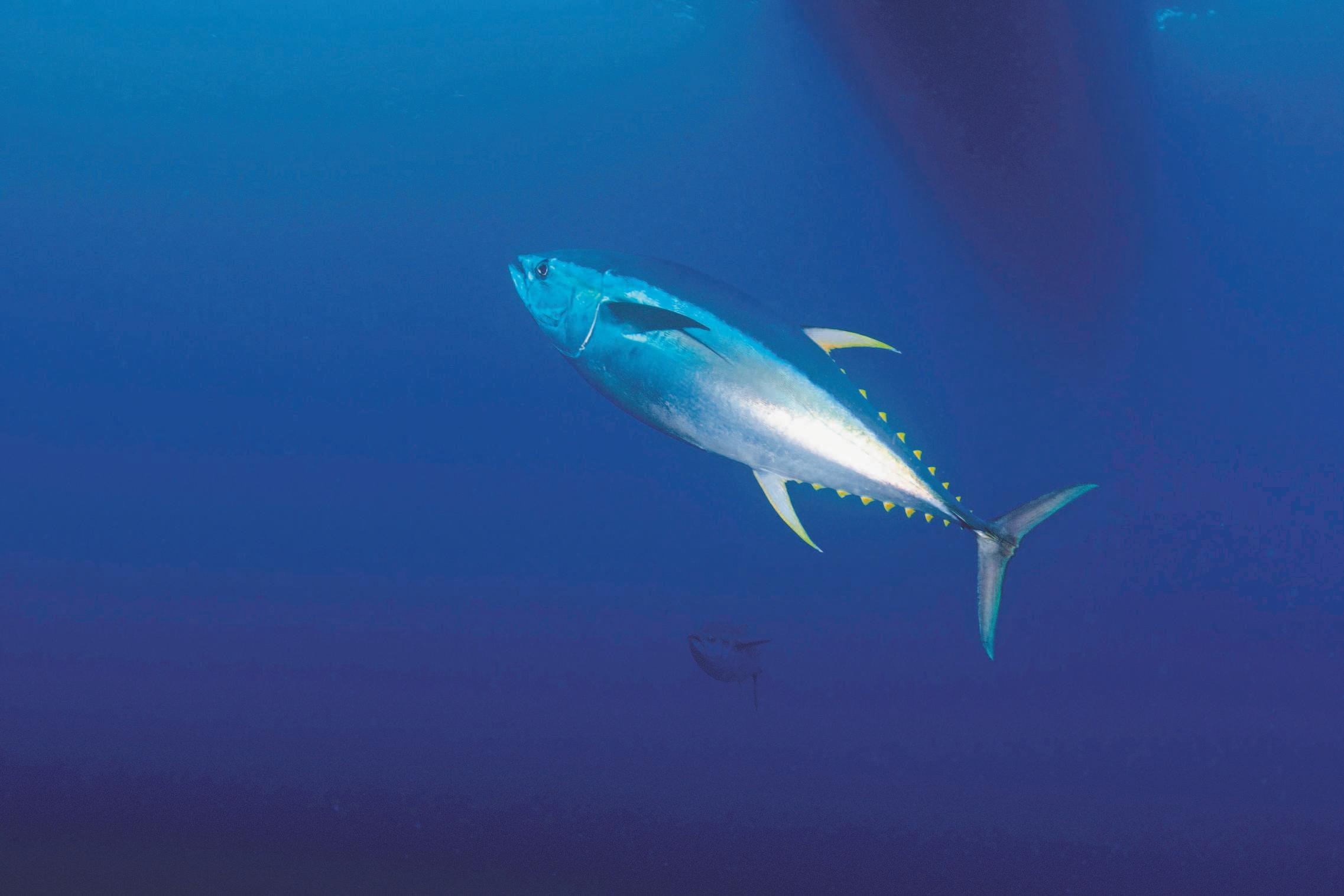
By Matt Alderton
HE OLD DATING AXIOM is true: There really are plenty of fish in the sea. But when one of them ends up on your dinner plate, you can’t help but wonder whether it’s fresh and where it’s from.
And for good reason, suggests the Center for Science in the Public Interest (CSPI), a food safety watchdog that said fish and shellfish cause more foodborne illness per bite than any other food. According to CSPI, 85 percent of U.S. seafood is imported, and the FDA inspects only 1.2 percent of these imports. What’s more, an estimated one-third of all seafood is mislabeled by fraudsters seeking to cheat consumers or engage in illegal fishing, reports ocean conservation group Oceana.
As North America’s largest branded shelf-stable seafood company, packaged tuna purveyor Bumble Bee Foods has been fighting seafood chicanery for years . In 2018, it decided to enter a new era of high-tech traceability by a surprising solution: blockchain.
Although it originally was designed for cryptocurrency, the secure technology behind Bitcoin turns out to be as useful for tracking food as exchanging money, according to Eric Somitsch, senior director of industry solution management for consumer product and agribusiness at software company SAP .
“Blockchain is a concept and an

architecture based on distributed-ledger technology,” explained Somitsch, who said software built on top of a blockchain allows information to be captured and communicated instantly and immutably across a disparate network of divergent users. “It’s a tool that provides trust and transparency because everyone in a supply chain can provide and access data, and because there’s no one party in the middle that controls everything. It’s a democratic approach to data sharing.” That makes it an ideal mechanism for tracking seafood from the ocean to the table, according to Bumble Bee
Foods Chief Information Officer Tony Costa . “Consumers want to know that their fish was caught sustainably, that it’s high quality and that it’s safe to eat,” Costa said. “Blockchain is the perfect platform for that.”
Because the appetite for safe, sustainable seafood is so great, fish is low-hanging fruit for nascent blockchain technology. And what works well at sea could also transform agricultural supply chains on land — and already is, thanks to forward-thinking partnerships between farmers, retailers and tech companies. “(Blockchain technology) connects consumers and producers to one another so that we can vote with our dollars and make decisions about our food based on real information rather than marketing spin. That’s a really powerful thing.” — ERIK OBERHOLTZER, chef and food activist
TRACKING TUNA
More companies are responding to consumer demand to know precisely where their food comes from. Marketing firm Response Media reported that 99 percent of people want transparency in fresh foods and 98 percent in packaged foods.
Bumble Bee Foods began looking for a new way to sate this appetite after its 2013 acquisition of frozen seafood company Anova Food. Hoping to optimize Anova’s supply chain — which originates in Southeast Asia — Costa made several trips to familiarize himself with it.
“Once I’d made one or two visits, it became really obvious that we had an incredible opportunity to leverage the latest and greatest technology to bring traceability to fruition,” explained Costa, who subsequently partnered with SAP to test and implement its SAP Cloud Platform Blockchain service, which became operational in spring 2019 for Bumble Bee’s Natural Blue by Anova frozen yellowfin tuna steaks. “It starts with fishermen. They go out, catch the fish and take it to a local buyer. That buyer takes it over to a processing plant, which will then send it to our finished goods plant, where at the conclusion of producing the finished goods we put a QR code on the back of the package. The consumer can then scan the QR code with their cellphone, and we will tell them where the fish was caught, how it was caught, the species that’s in the package, as well as if it’s Fair Trade-certified.”
At every link in the supply chain, stakeholders upload and validate the data that eventually reaches consumers — oftentimes using a simple smartphone app that allows even the smallest fishermen to contribute.
“Blockchain technology is so intuitive, so necessary and so clearly appropriate for the problems we have to solve around supply chain transparency and integrity,” said chef and food activist Erik Oberholtzer, co-founder and former CEO of farm-to-fork restaurant chain Tender Greens and now a regenerative farmer in Berks County, Pa. “It connects consumers and producers to one another so that we can vote with our dollars and make decisions about our food based on real information rather than marketing spin. That’s a really powerful thing.”
SAFETY FIRST
Walmart, the world’s largest bricksand-mortar retailer, also has recognized blockchain’s benefits. In 2017, it joined the IBM Food Trust consortium, a
CONTINUED
FISHERMAN

LOCAL BUYER


PROCESSING PLANT

FINISHING PLANT

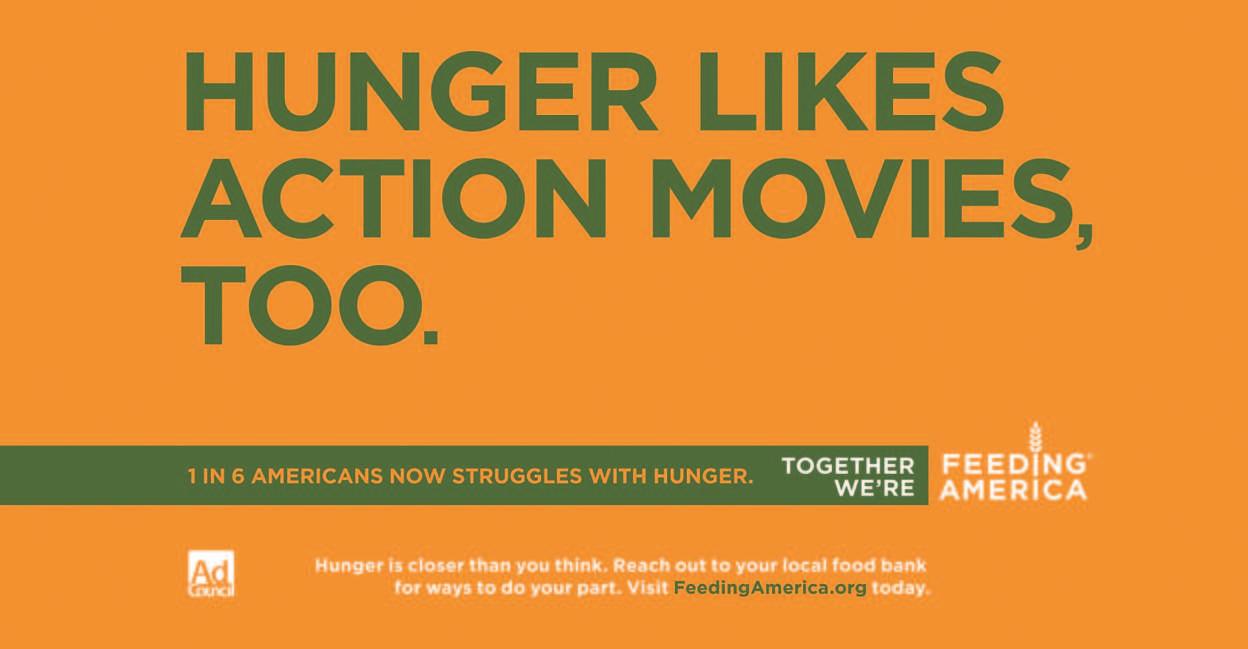
blockchain-based cloud network that brings traceability to food supply chains . A diverse group of retailers and suppliers — including Walmart, Tyson Foods, Dole Food Co., Driscoll’s, Golden State Foods, Kroger Co., McCormick & Co., Nestle and Unilever — spent 18 months testing the platform, which currently spans more than 200 member companies tracking more than 350 products . Walmart formally implemented it in September 2018 by requiring all of its leafy greens suppliers to use it, and this summer it will extend the same mandate to green bell peppers, with more foods to follow.
“We gave all our suppliers one year to get on the blockchain and enable visibility all the way back to the farm for every shipment of leafy greens we receive,” said Tejas Bhatt, senior director for food safety and innovation at Walmart , which started with leafy greens suppliers because of the E. coli outbreak that happened in March 2018 with romaine lettuce from Yuma, Ariz. In the event of a similar outbreak, IBM Food Trust will help Walmart and its suppliers quickly identify the outbreak’s source and remove contaminated products from shelves. Walmart tested the platform with sliced mangos from Mexico, for example, and found that it could trace fruit’s origin in 2.2 seconds using IBM Food Trust compared with nearly seven days without it. “That changes the entire dynamic for outbreak investigation,” continued Bhatt, who said food recalls can now be more surgical in order to spare innocent suppliers. “As important as it is to identify which farms and products have been infected, it’s equally important that we identify
CONTINUED
HOW BLOCKCHAIN COULD MEND OUR FRACTURED GLOBAL FOOD SUPPLY
Ever open up a pack of blueberries only to discover that mold has already set in? Better food safety and freshness are just two benefits that can come from applying blockchain technology to the global food industry. By creating a decentralized ledger that records transactions in a global network, IBM Food Trust can be used to help participants find new ways to reduce food fraud and costly batch recalls and provide greater governance over the food ecosystem that suffers from a lack of transparency.
This helps ensure the origin of foods so they can be traced back to the contamination source in the event of a recall. The ability to store proof of origin and compliance data helps confirm that producers have been fully vetted and conform to a set of standards. BLOCKCHAIN ENABLES FARMERS TO DOCUMENT THE SOURCE OF THEIR PRODUCE
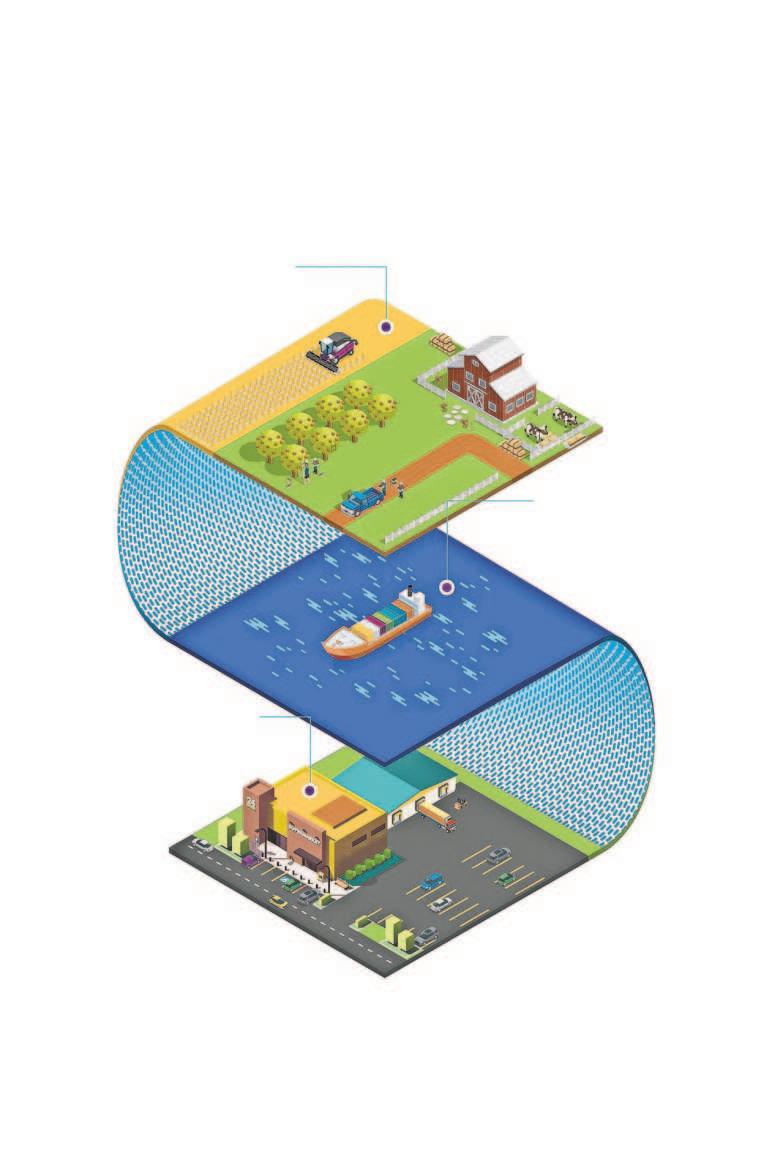
Better access to up-to-date information that’s endorsed by multiple parties increases visibility into adverse conditions that could affect food shipments in transit. BLOCKCHAIN DIGITIZES DATA ON A SECURE, IMMUTABLE LEDGER
Maximizing freshness reduces the amount of food that’s thrown away. It also makes business operations more efficient. BLOCKCHAIN HELPS RETAILERS GAUGE THE FRESHNESS OF PRODUCE
When a foodborne disease outbreak occurs, food recalls become needlessly expansive because the source of contamination can’t be immediately identified. Better tracking at this stage can help pinpoint the source of contamination, limit the number of consumers affected and reduce global food waste.
SOURCE: IBM
MILLIONS OF PRODUCTS SOLD TO DATE HAVE PASSED THROUGH IBM FOOD TRUST
BLOCKCHAIN CAN REDUCE THE TIME IT TAKES TO TRACE THE SOURCE OF FOOD FROM 7 DAYS TO 2.2 SECONDS
A RECALL WILL COST A FOOD COMPANY AN AVERAGE OF $10M, NOT INCLUDING BRAND DAMAGE AND LOST SALES

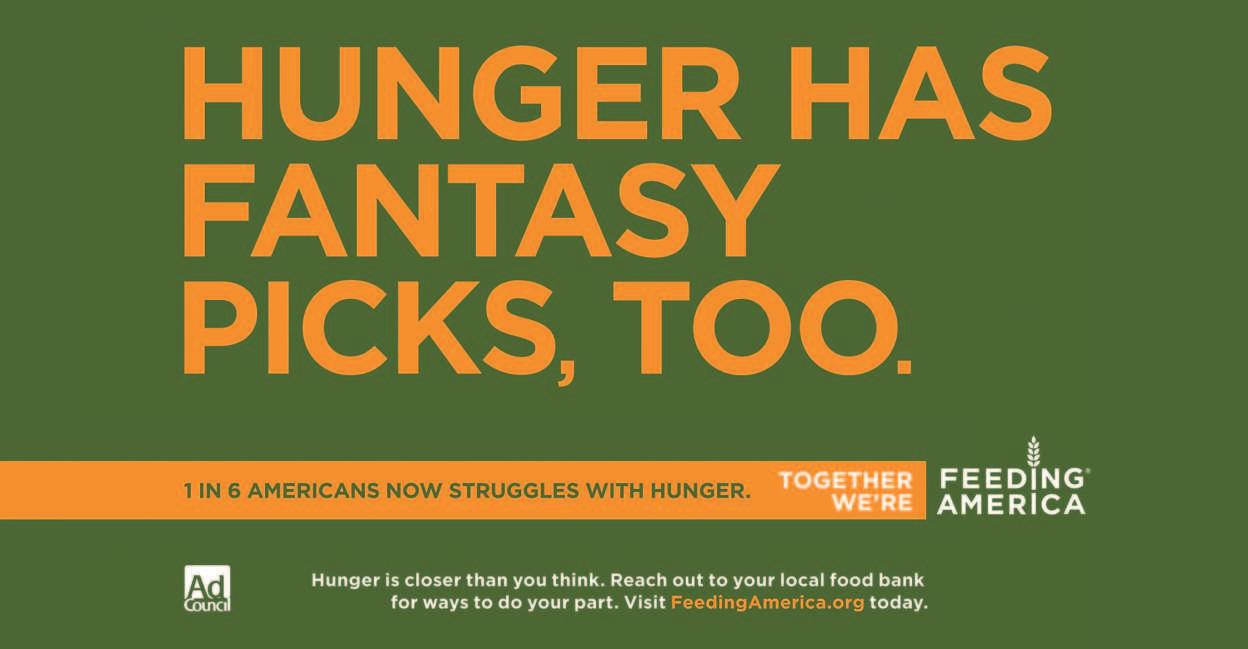
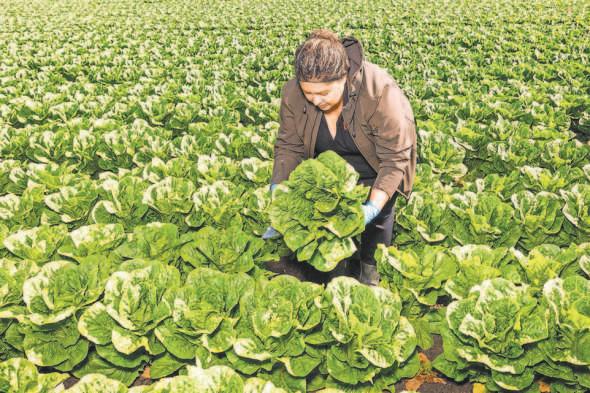
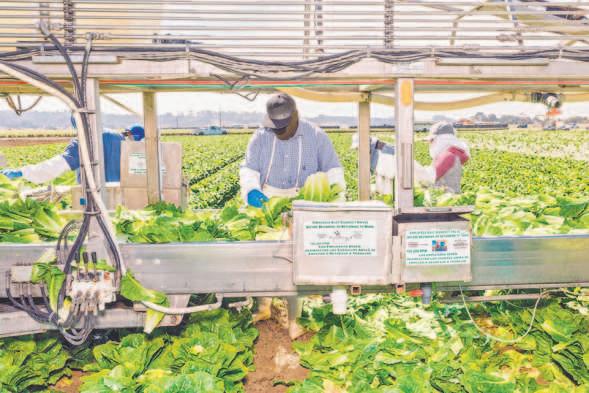
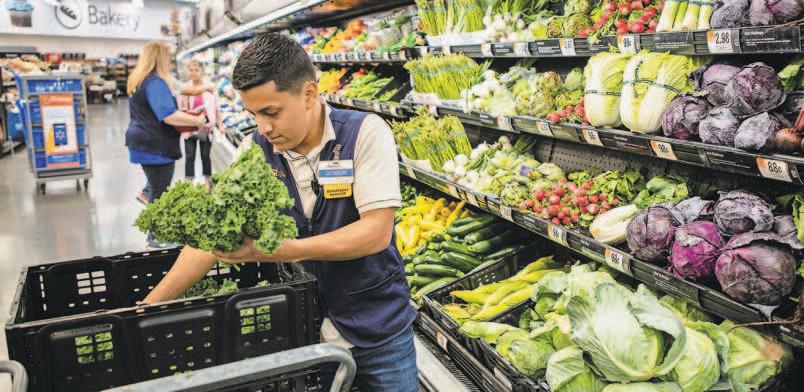
BLOCKCHAIN AT WALMART
Walmart has begun using blockchain to track its leafy greens suppliers. In the event of a foodborne illness event, IBM Food Trust will help Walmart and its suppliers quickly identify the outbreak’s source and remove contaminated products from shelves. which farms and products are safe so we can continue selling them to our customers.”
But food safety isn’t the only problem. Another is food waste. During its mango pilot, for instance, Walmart discovered a bottleneck in the supply chain. “It was taking four days for mangos to cross the (Mexico) border into the United States. That’s four days of shelf life that we could give back to the consumer, which could have a huge impact on food waste,” continued Bhatt, who said Walmart is working with U.S. Customs and Border Protection to explore ways to streamline the importing process — including data sharing via blockchain.
HELPING PURVEYORS PROSPER
Producers have as much to gain from blockchain as consumers, according to Bhatt, who said blockchain requires the entire supply chain to be digitized, which yields new and valuable data that can benefit even the smallest growers. “While we are asking for visibility from them going back to the farm, in exchange we are giving them visibility on how their food is deploying from our distribution centers to our stores — which is valuable information for suppliers,” Bhatt said. “With that information, they can do better demand forecasting, for example, and better marketing.”
Data also can be used for economic development. In the case of fish, buyers who used to do business on a handshake now have digital records of how much fish they procured on any given day from any given fisherman. “By capturing that information, they have at their fingertips the ability to look at historical trends,” said Costa. “We can then partner with NGOs (nongovernmental organizations) to look at why some fishing communities are catching more fish than other fishing communities, using these data analytics to increase successful fishing and help fishermen be productive. Because if they go fishing and don’t catch any fish, nobody wins.” Producers and purveyors might also be able to charge a premium, suggests Response Media, which found that consumers overwhelmingly are willing to pay more for fresh and packaged items that have a high degree of food chain transparency . In fact, coffee industry consortium Farmer Connect partnered with IBM in January to launch a mobile app called Thank My Farmer, which allows consumers who purchase 1850 brand premium single-origin coffee to tip the farmers who grow it by leveraging the traceability that blockchain affords.
“Imagine I buy a cup of coffee at a local coffee shop. It costs me $2. How much of that does the farmer get? Typically, 5 cents,” said Ramesh Gopinath, vice president of blockchain solutions and research at IBM . “As an end consumer, I might be willing to pay an extra 5 cents for my coffee if I know all of it will go back to the farmer. That’s precisely what this application does.”
The ability to reward farmers for their work could transform food for the better. “It allows consumers to send a message back down the supply chain that said, ‘We like what you’re doing, and if you do more of it, we’ll pay for it,’” Oberholtzer said.
BLOCKCHAIN 2.0
As it matures, blockchain can offer more sophisticated metrics, such as the temperatures at which the product was stored and how it was transported to market. As a result, consumers eventually will be able to reward food suppliers and brands based on the freshness of their products or the size of their carbon footprint.
SAP provided a further glimpse into the future of blockchain last year when it launched its latest solution: SAP Logistics Business Network, material traceability option — a blockchain application that allows food companies to trace multi-ingredient products. “By working with companies that produce complex processed foods, we can ensure traceability not only of an apple from the orchard or a fish from the sea, but also something a lot more complicated, like a pizza with 50 ingredients and sub-ingredients,” said Somitsch.
Ultimately, more traceability of more products will give consumers more choice. And perhaps even better health. “I see blockchain right now as 1993 internet,” said Oberholtzer. “We’re still very much in dial-up, but I’m excited to see how it will transform the world in the decade ahead.”





